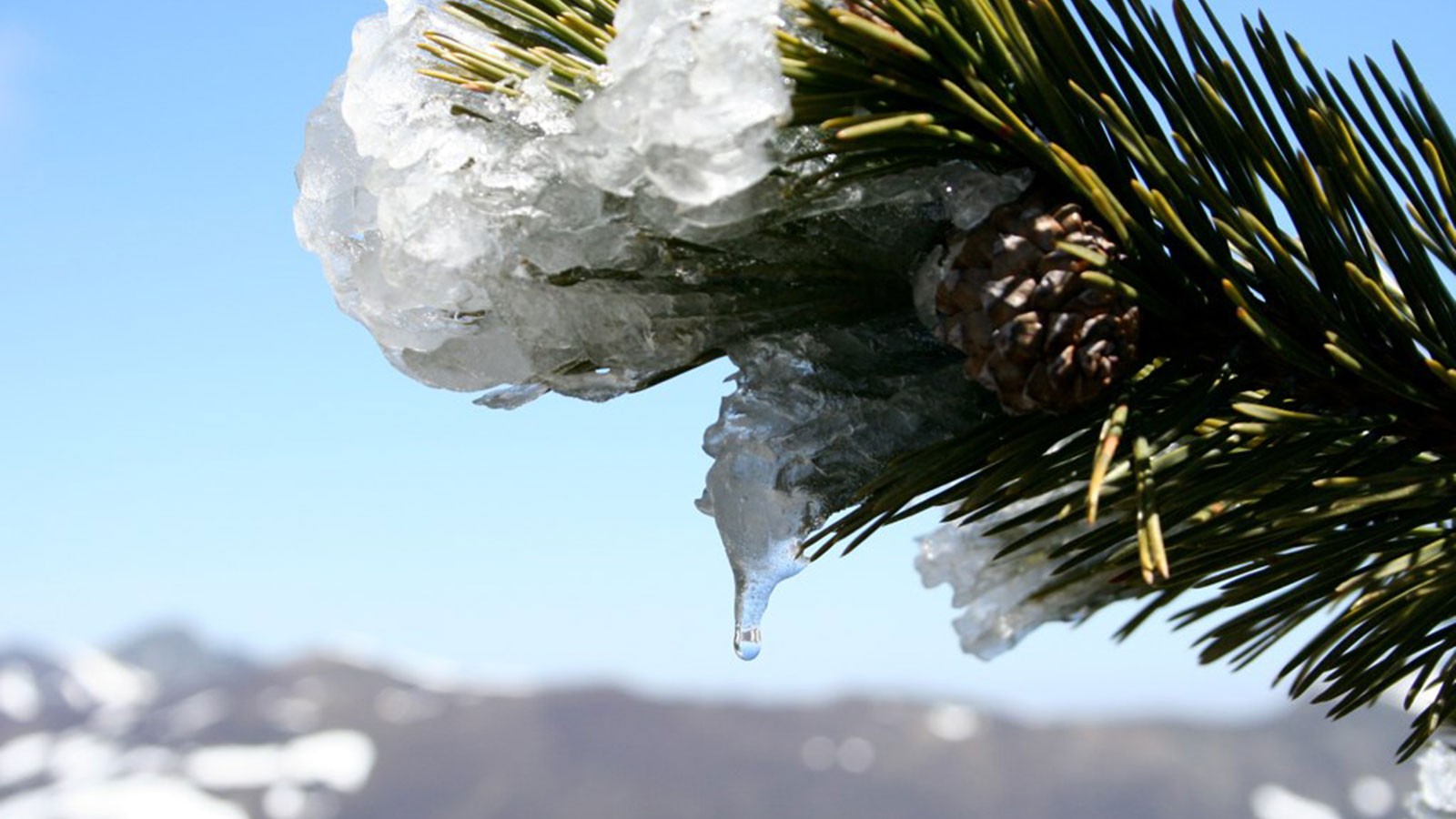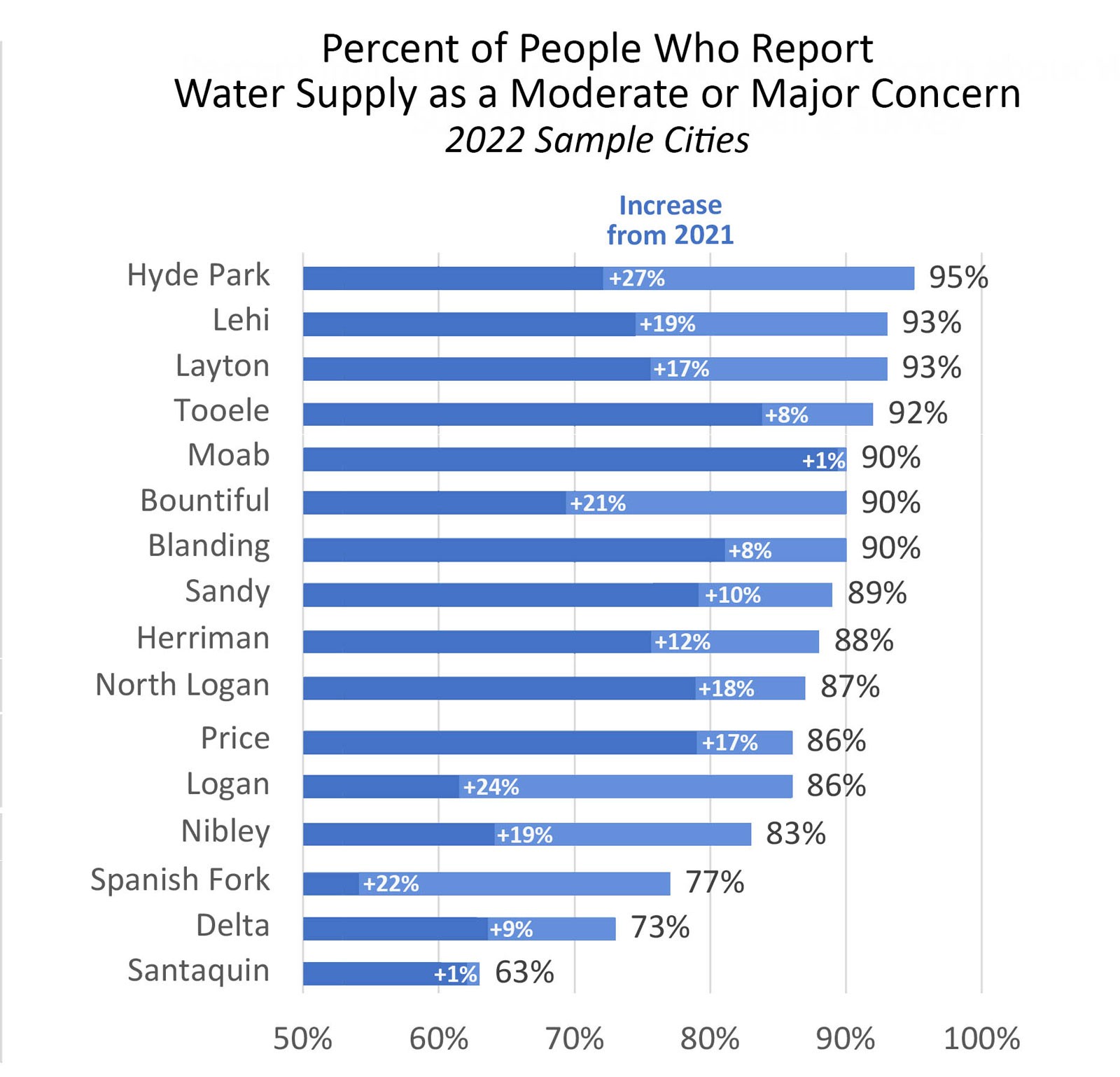Utah Wellbeing Survey: Water Woes, Recreation & Land Access Top Utahns' Concerns in 2022
By Lael Gilbert |
Editor’s note: This is the third of a three-part series delving into data results from the Utah Wellbeing Project, which tracks community wellbeing across the state.
Above-normal temperatures and below-normal rainfall have been the norm across Utah for two long decades. Snowpack, important to summer water supply, melts away in March. Mammoth swaths of lakebed surrounding the Great Salt Lake are now cracked and windblown. Perhaps it should be no surprise that at the top of Utahns’ list of concerns for 2022 is water supply, according to the Utah Wellbeing Survey.
For 21 of 33 cities surveyed in early 2022, water supply was the No. 1 issue, with 83% or more of respondents indicating it is a moderate or major concern. For all other cities included in the project, water supply was in the top three issues, with at least 63% of survey respondents indicating it as a major or moderate concern.
And, like the ascending “bathtub ring” around Lake Powell, those numbers have risen dramatically in the last year or two, said Courtney Flint, director for the Utah Wellbeing Project from the Quinney College of Natural Resources. For the cities that participated in the survey over two years (2021-22), concern about Utah’s water supply went up — for some, it went way up. In Saratoga Springs, the percentage of respondents concerned about water supply jumped from 60% to 88% of respondents in just one year. Hyde Park increased from 68% to 95%.
“People in the state definitely have their eye on this particular topic,” said Flint. “They are noticing how water supply is affecting or could affect their lives and communities.”
Water supply is a challenge for cities across the state, but this moment could also be an opportunity, she said.
“It could be the best time for city and state leaders to highlight water supply as a major issue, to harness people’s attention where that kind of energy is needed for change.”
Utahns’ wellbeing seems to be connected to our shared natural resources in a unique way, Flint said. The majority of the top-tier concerns reported in the survey center on Utah’s environment, both distant and close-to-home. Eight of the top ten concerns listed by residents were related to Utah’s land, water or air. People in Utah communities reported that mountains, rivers and streams, city parks, trails, lakes, farmland, and red rock most positively influenced their wellbeing. Outdoor recreation and nature-based activity participation was strongly correlated with higher wellbeing scores.
But more than just a source of entertainment, outdoor activities seem to influence other aspects of life in Utah — how people relate to their community. Things like recreation on public lands (both motorized and non-motorized), enjoying local wildlife, using city parks, participating in city programs and gardening were all positively associated with community connection.
“Whether remote and rural or highly urban, residents of Utah’s cities and towns are very in tune to the natural resources they depend upon,” Flint said. “These data should serve as a call for action around the state.”
The Utah Wellbeing Survey project is designed to assess the wellbeing and local perspectives of city residents, and to provide information to city leaders to inform their general planning processes. In early 2022, 33 cities participated in the survey with a total of 9,947 completed surveys. Questions on the survey include rating importance of 10 different domains or categories of wellbeing, participation in recreation and nature-related activities, perspectives on local population growth and economic development, the influence of landscape features on wellbeing, concerns for the future, and an array of demographic characteristic questions.
To see more results, and details about the wellbeing of your city, visit the Utah Wellbeing Project website.
WRITER
Lael Gilbert
Public Relations Specialist
Quinney College of Natural Resources
435-797-8455
lael.gilbert@usu.edu
CONTACT
Courtney Flint
Professor, Community Resource Specialist
Department of Environment & Society
(435) 797-8635
Courtney.Flint@usu.edu
TOPICS
Water 257stories Wellness 161stories Land Management 123stories Outdoor 78stories Recreation 69storiesComments and questions regarding this article may be directed to the contact person listed on this page.









